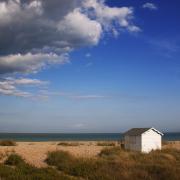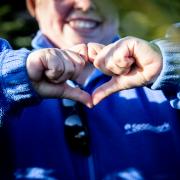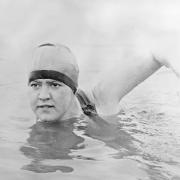Chemist, inventor, mathematician and Imperial College Rector, this month’s Kent Great was the mind behind petrol’s familiar ‘octane rating’, a scientific administrator capable of helping develop the critical invention of radar during WW2, and a wide-ranging thinker who conducted the first serious investigations into UFOs. Step up, please, Sir Henry Tizard
Born in Gillingham on August 23, 1885, Henry Tizard was the son of naval officer and hydrographer Thomas Tizard (1839-1924) and Mary née Churchward (1847-1931), who’d been married in Pembroke Dock, Wales, in October 1881. Henry’s father was pretty eminent, a Companion of the Order of the Bath, and Fellow of the Royal Society, accolades that Henry would also attain. Henry was an only son, although there were also three daughters who survived into adulthood.

Tizard education indicates a degree of privilege, although we won’t hold that against him. Westminster School was followed by Magdalen College, Oxford, where he majored in Maths and Chemistry. Later (1942-46), he was to be elected President of Magdalen, the first scientist to hold this office at any Oxford college. He’d hoped to follow his father into the Navy but poor eyesight put the kibosh on that. Instead he graduated from Magdalen in 1908 and the following year became a researcher at a Royal Institution lab. In 1911 Tizard was back at Oxford, this time at Oriel, as a tutorial fellow (teacher in other words) and lab demonstrator. In the same year he appears to have moved from his home town of Gillingham to Kensington, where he married four years later.
Tizard's bride in 1915 was Kathleen Wilson (1891-1968), the daughter of a mining engineer. They had three children, professor and paediatrician Peter Tizard (1916-93), who, like his father, would be knighted, engineer and college tutor Richard Tizard (1917-2005), and David Tizzard (born 1922), a GP. During WW2 Henry served first in the Army, then in the Royal Flying Corps, even learning how to fly despite his dicky eyesight. He was then assistant comptroller of aeronautical research (1918-19). Tizard was later Secretary to the D.S.I.R. (Department of Scientific and Industrial Research) between 1927-29, and became Rector of Imperial College London in 1929 (until 1942), overseeing the college’s expansion.

Tizard was Chairman of the Aeronautical Research Committee (ARC) for ten years from 1933, during that key period when storm clouds gathered in the lead up to the next war. It was in 1935 that Tizard’s ARC started its radar development; given what was coming, it was timely. He’s still remembered as the man who gave the RAF the key advantage of radar in time for the determining Battle of Britain. Put simply, he was one of the men who ensured our survival; aided and abetted of course by brave RAF pilots of many nationalities. In the first volume of his account of the second world war, PM, Winston Churchill mentions Tizard making ‘his report upon Radio-location’ at the fourth meeting of the Air Defence Research Committee on July 25 1935, a meeting Churchill attended. Churchill goes on to relate the experiments, executive actions and erection and equipping of a chain of stations to detect incoming aircraft. In June 1939 Tizard and Churchill were together again - not in some committee room but in an aircraft. As Churchill put it: ‘To see the establishments which had been developed on the east coast. We flew around all day … by these and other processes, known only to a very small circle, the German attack on Great Britain was to a large extent parried in the autumn and winter of 1940’.
Once war began the British Technical & Scientific Mission - or the ‘Tizzard Mission’ as it was dubbed - headed to the States to share top-secret research and development, the mission travelling across the Pond in September 1940. Details pertaining to radar and the jet engine were included in the technical info sharing. It was Tizard who’d also secured uranium ore in 1939 for research into a nuclear weapon. He was in at the beginning of developments that helped change and shape the world. In 1944 Tizard won the Royal Society of Arts’ Albert Medal, first awarded 80 years before in memory of Prince Albert, and bestowed for ‘distinguished merit in promoting arts, manufactures and commerce’. Tizard got the gong for work in aeronautics and services to advanced Technical Education. He joined a glittering roll-call of winners, including Marie Curie, Guglielmo Marconi, Sir Frank Whittle, Christopher Cockerell, Barnes Wallis, Stephen Hawking and Tim Berners-Lee.

After the war Tizard was Chairman of the Defence Research Policy Committee, and in 1948 he was President of the British Association and the MOD’s Chief Scientific Advisor, a post he held until 1952. It was Tizard in his post-war persona who hammered home the message about what the next war might involve. Rather more quirkily, it was Tizard who championed the MOD’s UFO project with a 1950 study maintaining that unidentified flying objects could not be dismissed unless a proper scientific study into alleged sightings was conducted. What transpired was perhaps the most inspired name of any committee yet conceived by our Civil Service, the ‘Flying Saucer Working Party’, or FSWP.
Tizard was elected a Fellow of the Royal Society in 1926, was made a Companion of the Order of the Bath in 1927, and was knighted in 1937. He had a coat of arms, its motto ‘The Silence of Fools’, which perhaps tallies with his belief that the secret of science was ‘to ask the right question’, but certainly not to remain silent. He’s described as having been outspoken (which again squares with his motto) but also warm and witty, although his wit was apparently of the caustic persuasion. He liked a game of snooker or billiards but also a good old-fashioned chinwag, perhaps laced with that caustic mirth. Also known as an author, lecturer and broadcaster, he died in Fareham, Hampshire in October 1959, aged 74.




























